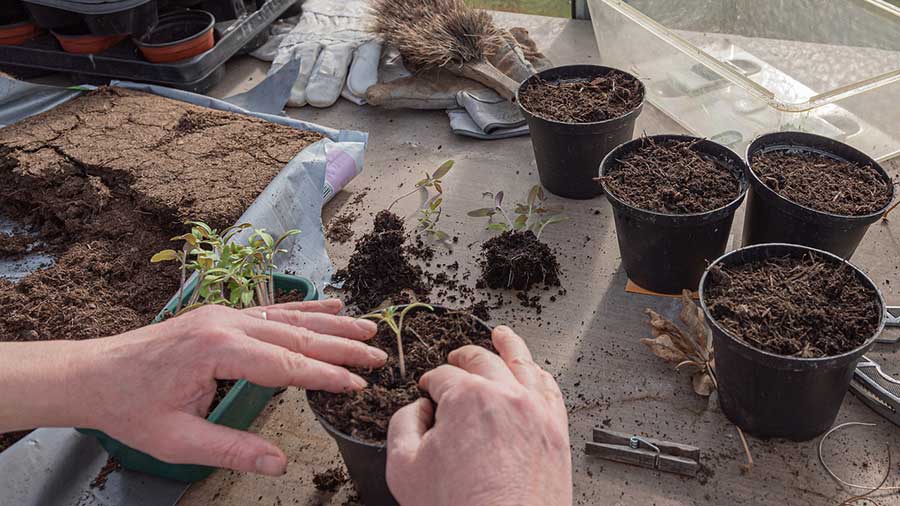Planting in containers means that the plant will have a limited area to feed on nutrients from the soil. To ensure that they remain healthy all year round, I make it a point to use quality garden soil for my pots. Buying those commercial potting mix is one good option but it can get expensive really fast, so sometimes, I just improve the soil that I have at home.
If you really have to improve the quality of your garden soil quickly and cheaply, then you can do the following: before planting in the soil, make sure to loosen it up and break the chunks apart. Also, make sure the soil particles are loose before putting it in the pot or container. You may also put some organic materials such as banana and carrot peels in the soil.
But if you really want the best garden soil for your plant, then you may need to mix in some materials to enrich it.
Characteristics of a Good Garden Soil
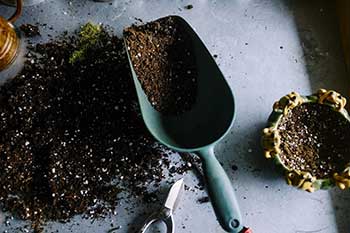
From research, I learned that there are really 5 characteristics of good garden soil.
- It should be porous. Good porosity provides good air circulation and root development. If the soil is hard and dry, the roots cannot expand causing stunted growth. The loose texture is good for the roots in that it doesn’t have to spend more energy to spread to a larger area to look for nutrients. It also helps that there are no hard materials such as rocks or dead branches to stop the roots from spreading.
- It should be rich in nutrients. When the roots spread out and there are no nutrients to absorb, then they become stunted.
- It should have a good water holding capacity. Since most nutrients are water-based, then it makes sense that the soil has to hold on to the water in the soil. Too much water movement may result in the loss of nutrients in the soil.
- It has to be pathogen-free. The soil has to be free from disease-causing organisms such as fungus or bacteria. If one plant develops a disease, then there is a tendency that it will spread to the other plants.
- It has to be rich in microbial activity. Good microorganism enables the plants to resist disease-causing bacteria.
Materials to Use for Soil Improvement
Coco Peat
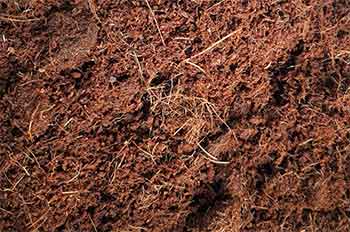
Coco peat, sometimes called coco noir, are those fine particles that come from grounded coconut husks. It is also available commercially for a cheap price. It can be used as a planting material or as an amendment to the soil. But before you use it, you have to soak it in water first for about 2 days, as the material is a little bit high on acidity.
It is also very porous, which means the material is loose and the particles don’t stick together when it is wet. It is a good soil conditioner to make the soil porous, however, it doesn't have any nutrients and microbial activity.
Sawdust
Sawdust is widely available from any woodworking shops and furniture makers. These fine powder-like wood particles that are being produced through cutting woods is an excellent potting mix material. It is high in porosity as the material doesn’t bind together. It doesn’t have any nutrients, though, but it makes up for it by having a good water holding capacity because it’s made out of wood. It is also low on microbial activity.
Woodchips or wood shavings
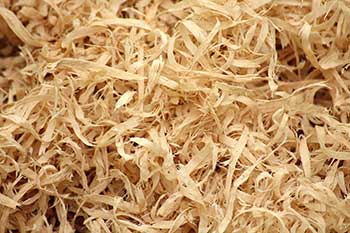
There are also available wood chips in wood furniture makers and woodworking shops. You can use it on your potting mix. It is high in porosity. It is a loose material as it has bigger particles. It will also work as a soil conditioner. It has no nutrients but it is high in carbon. Coco peat, sawdust & wood shavings have high traces of carbon. Carbon is the main component of soil organic matter and helps give the soil its water-retention capacity, its structure, and its fertility.
Decomposed Animal Manure
Animal manure can be used as long as it is already decomposed. The kind where it is not wet and warm anymore. You can use dried manure from cows, goats, horses, as well as, pigs, chickens, rabbits. Just refrain from using carnivorous animal's manure as they might carry contaminants. Regarding its properties, it does not have porosity because the texture is somewhat sticky or clayish. However, it is a very rich source of nutrients.
It is high in nitrogen, potassium, and phosphorus, especially chicken and rabbit manure. It also has a high water-holding capacity because it has a clayish texture and could hold water well.
Vermicast
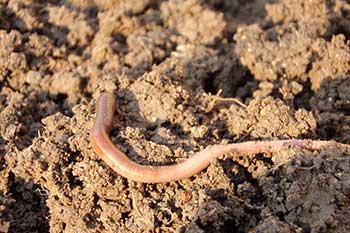
One of the best materials to use in improving your soil is vermicast. Vermicast (also called worm castings, worm humus, worm manure) is pure worm droppings. It is clayish therefore it is low in porosity. However it is rich in nutrients because of what they eat—especially the African Night Crawlers, they are good nutrient converters.
Water holding capacity is also good as it is clayish particles. Its digestive system can actually remove traces of chemicals that could be harmful to plants.
It also has a good microbial activity because the microorganisms within a worm's digestive tract help degrade toxic materials in their food. There is also commercially available vermicompost where the soil is already mixed with vermicast.
Sand
Regular sand can also be used to increase porosity. Other than that it has no other contributions to your potting mix. It has no nutrients and water holding capacity. It also doesn’t have any microbial activity.
What Material Should I Add to My Soil Type?
Whenever possible, only use topsoil. One useful tip I learned is when it rains, observe the natural waterway. When you see an area where much of the water has pooled, then that is most probably a fertile type of soil. Gather the topsoil you can get your hands on and sift to get rid of big stones.
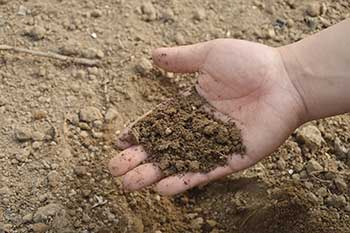
If your soil type is sandy it has adequate porosity. When you plant in a sandy type of soil, the plant’s roots are not strongly attached to the soil, causing it to collapse easily even in the slightest of wind or even if you are watering it. If you water in sandy soil, the water is easily absorbed but it also easily drains, so it becomes dry again in a couple of hours. If your soil is sandy, you have to water 3x a day or even more.
If it is clayish then it has low porosity. When you plant in this type of soil, the plant will grow sturdy. One advantage of clayish soil is that it absorbs water very well. If you water it, it takes days before it goes dry. Sometimes in clayish soil, I just water once a week. A big disadvantage is if it is rainy, the soil gets really wet and muddy.
This becomes a problem because it is also important for the plant roots to breathe. The tendency if the plant is drowning in water is that it tends to develop a root rot causing it to die. It’s very important that the soil is dry once in a while.
Water holding capacity also depends on the type of soil. If the soil is sandy, it is low in water holding capacity, and therefore is low in nutrients. But if the soil is peaty, loamy, and clayish, the water holding capacity would be high, and therefore the nutrients would stay longer in the soil and not leach out.
If your soil is not sterilized, it could contain a lot of possible soil-borne diseases. Soil is rich in microorganisms. However, the majority of those microorganisms are neutral bacteria, meaning they’re neither good nor bad. There may be a need to sterilize the soil, but this really depends on you.
Knowing the type of soil you have, you can now mix it with another material to fill in the needs of your soil and to get the proper potting mix for your plants.
- To improve porosity, you may add sand, coco peat, sawdust, or wood chips.
- To increase soil nutrients, add in vermicast or animal manure
- To improve water holding capacity, mix soil with sawdust, vermicast or animal manure
- To make it pathogen-free, sterilize your soil.
For the type of soil that I have, I’m using a ratio of 4-1-1-1. That is 4 cups soil, 1 cup coco peat, 1 cup wood chips, and 1 cup worm cast. This combination is a cheap, simple, and effective type of garden soil. This potting mix is what I put in small pots or containers.
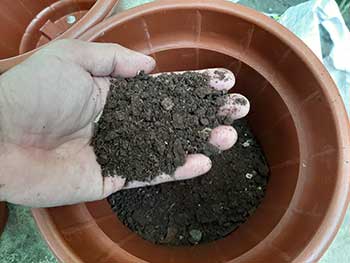
From my experience, this potting mix soil can be used in most plants. I have been using this to grow my herbs and vegetables such as basil, bell peppers, lettuce, carrots, tomatoes, and even some ornamental plants like petunias and asters.
As much as possible, whatever mixture you might decide to use, make sure the soil is porous, rich in nutrients, and able to hold water well.
How to Quickly Sterilize the Soil
In some cases, sterilization is not really necessary, but I just like to be on the safe side. To sterilize my soil, I just pour in some hot or boiling water. After the soil has cooled down, I add microbial inoculants to provide microbial activity. Microbial inoculants are available commercially and it basically converts neutral microbes into good microbes to improve soil health.
Applying the Improved Soil in Pots and Containers
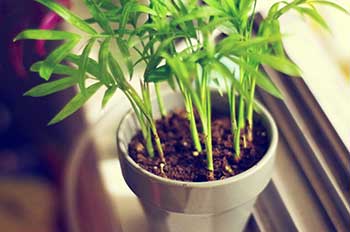
To put the mix in the pots, do not fill it to the top. I usually leave some space, about 1-2 inches from the top. From time to time I add vermicast and compost to add nutrients to the potting soil. Because the soil is in a container, the nutrients are somehow limited. Always remember that you still have to feed your soil with nutrients periodically.
Keep the soil healthy so your plants could stay healthy.


